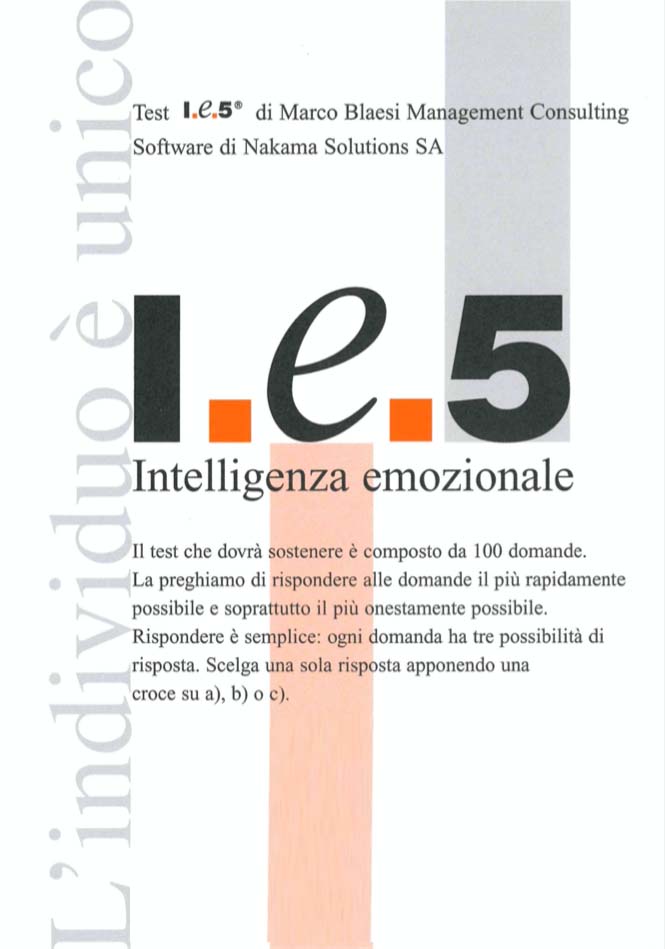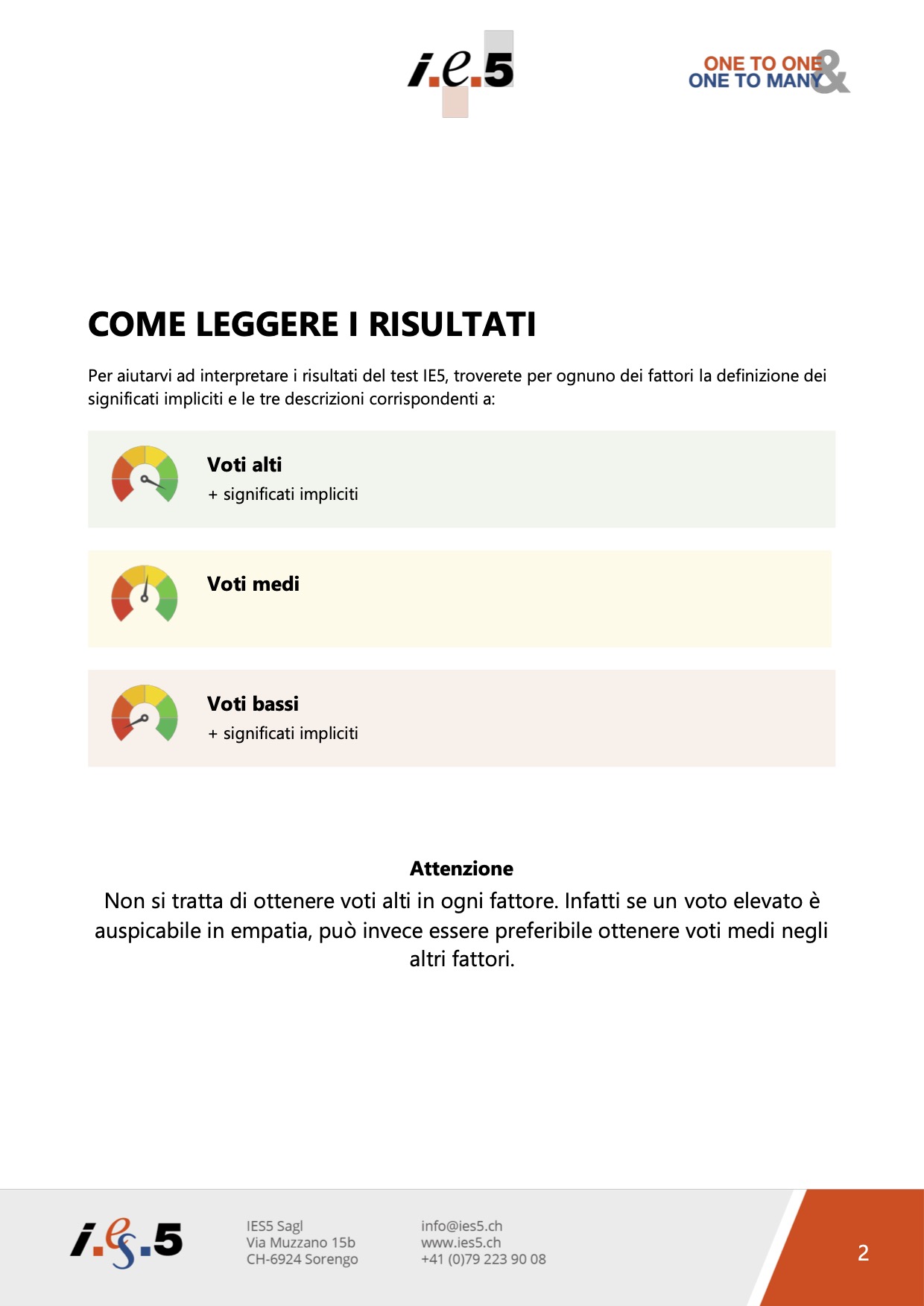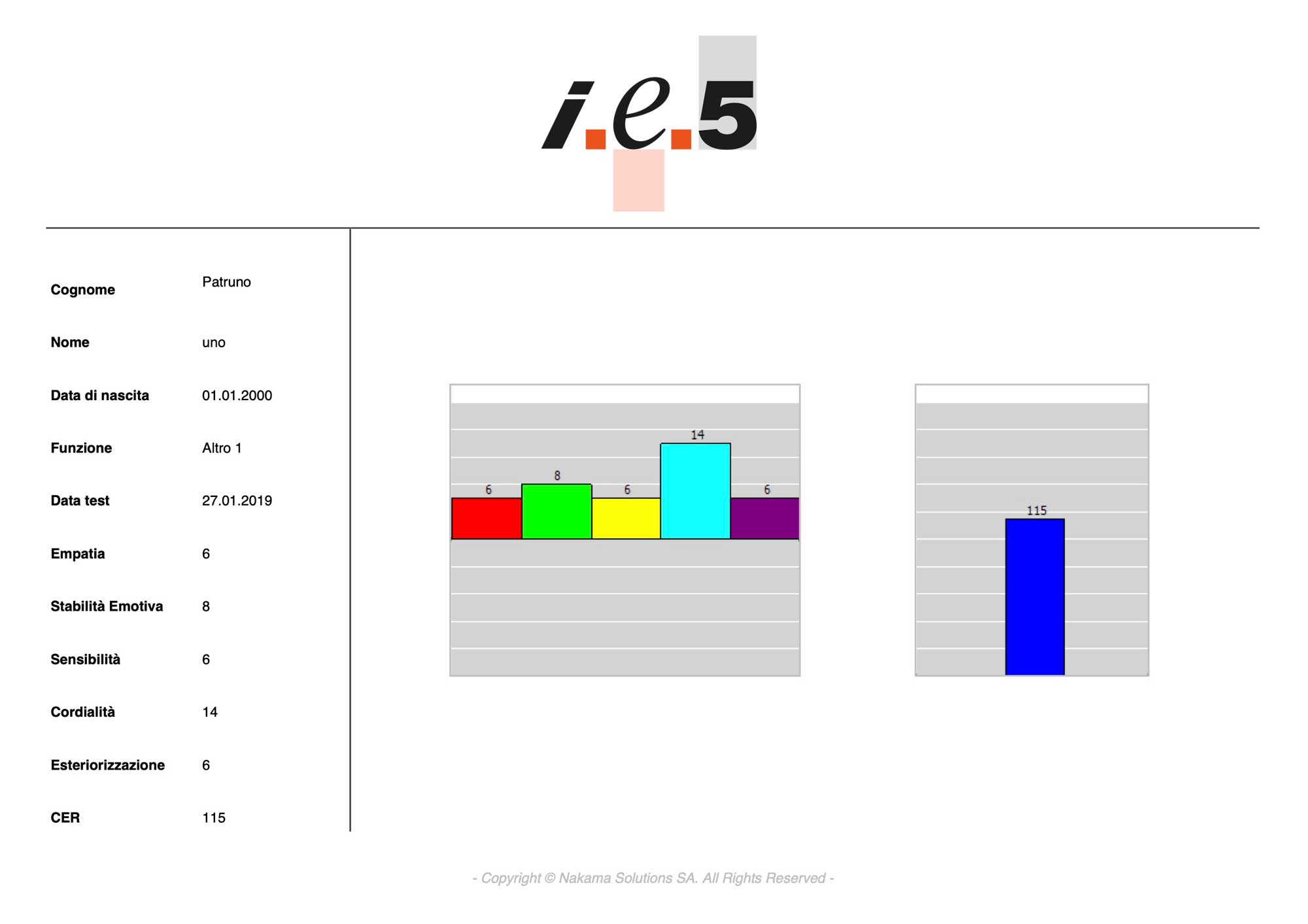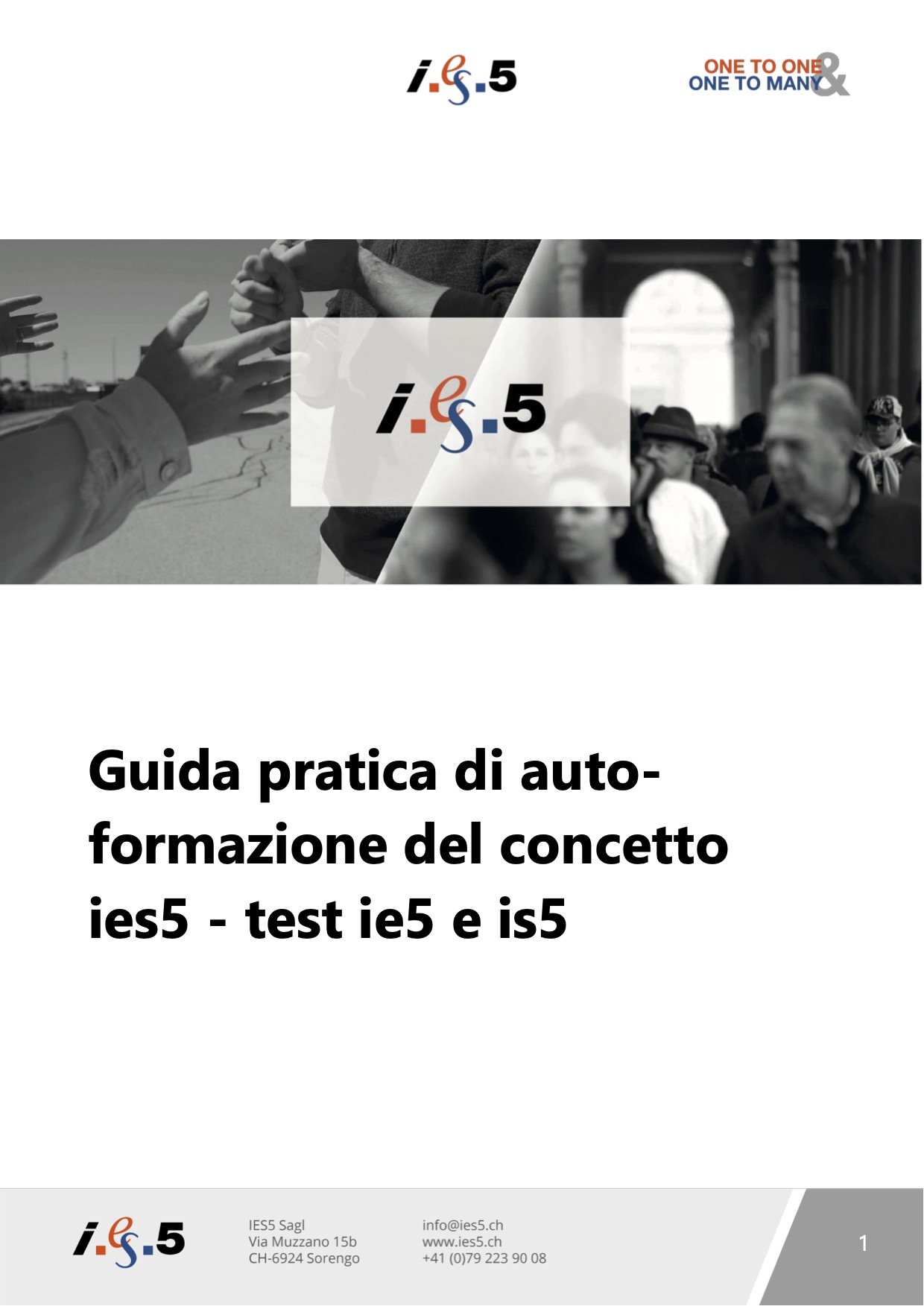
ONE TO ONE
Ie5
The assessment tool I.e.5® has been developed by RH Comportement in Paris and is based on a long field coaching experience in Emotional Intelligence carried on since 1991.
The concept involves the measurement of five major factors in Emotional Intelligence in order to evaluate the Relational Efficiency as a base for personal and collective improvements.
THE FIVE DIMENSIONS
OF THE EMOTIONAL INTELLIGENCE ARE:
EMPATHY
It is the ability to perceive, decode and intuitively understand other people’s sentiments and behaviors. It is the ability to put yourself in the shoes of others, to see the world through their eyes and experience their own emotions.
Moreover it is the ability to “read” non verbal communication, interpreting what is not said and feel affective states.
EMOTIONAL MATURITY
It is the ability to manage emotions in adapted and realistic ways, to cope with life difficulties, events and emotions in balanced ways, to control anger and tolerate frustration. A good emotional maturity usually fuels a feeling of well-being, it allows people to face and adapt to the problems of life.
It is the distancing that allows to avoid impulsive reactions.
KIND OF SENSITIVITY
It is the ability to use empathy, affectivity, feelings and intuitions in a profitable way.
In doing so we distinguish two kinds of sensitivity:
The scores above zero show a personality marked by a conceptual sensitivity.
- It is an ability based on empathy, affection, feelings and intuition. In this case judgements are based on aesthetic and subjective values. These people rather use the right hemisphere of their brain.
- The scores below zero show a personality marked by a sensitivity of achievment.
Their ability is based on the rational, functional and objective aspect of things. Their judgements refer to practical and objective values.
- These people rather use
- the left hemisphere of their brain.
The less good scores of this factor are then to be found at the top and low of the scale.
FRIENDLINESS
It is the ability to get warmly involved in relationships, to take an interest in others, to feel comfortable in situations that require close contacts.
It is the tendency to be open and available, using tact, kindness and being nice.
EXTERIORIZATION
It is the ability to communicate personal matters, being sincere and direct when expressing emotions. It is also the ability to use verbal language correctly
in order to establish fruitful relations.
IT IS WORTH REMINDING THAT EACH DIMENSIONS MAY EVOLVE AND RESULTS ARE NOT INVARIABLE. ON THE CONTRARY THEY ARE THE STARTING POINT OF THE IMPROVEMENT PATH.
THE COEFFICIENT RELATIONAL EFFICIENCY (CRE)
A good CRE is indicative of the ability to know oneself well and better understand others in their emotional state. It also reflects the quality of the relation.

TO KNOW THE LEVEL
OF YOUR RELATION WITH THE INTERLOCUTOR
ONE TO ONE
YOU CAN UNDERGO THE IE5 TEST
AND YOU WILL RECEIVE THE RESULT OF
CRE
COEFFICIENT OF RELATIONAL EFFICIENCY
BASED ON 5 FACTORS
OF EMOTIONAL INTELLIGENCE
CAN I IMPROVE MY EMOTIONAL INTELLIGENCE?
Yes, IF YOU WANT YOU CAN!
HOW ?
MEASURE
Questionnaire 100 questions triple choice
EVALUATE
Interpretation guideline
ACT
Self-development guide with 17 exercises
and/or coaching with a certified analyst

The Test – Questionnaire
Measure
The I.e.5 test measures 5 behavioural dimensions that determine Emotional Intelligence.
The result provides a measurement of each dimension and an overall value that defines the coefficient of relational effectiveness (C.R.E).
The test consists of 100 questions. Only one answer is to be selected among 3. The average time to complete the test is about 20-30 consecutive minutes.
RESULT EXAMPLE
The result will be represented graphically.
The evaluation criteria of the 5 factors that make up the Relational Effectiveness Coefficient (empathy, emotional maturity,…) range from a maximum score of +20 points to a minimum of -20, so determining the CRE ranges from 0 up to 200. .
interpretation guideline
Evaluate
Practical guide for understanding and reading ie5 test results
(PDF 14 pages with meanings and interpretations of high, medium and low grades)
self-development and/or coaching
Act
Practical self-development guide of the ies5 concept (37 A4 pages with method, program practice and 17 exercises)
Personal coaching with certified ies5 analyst





